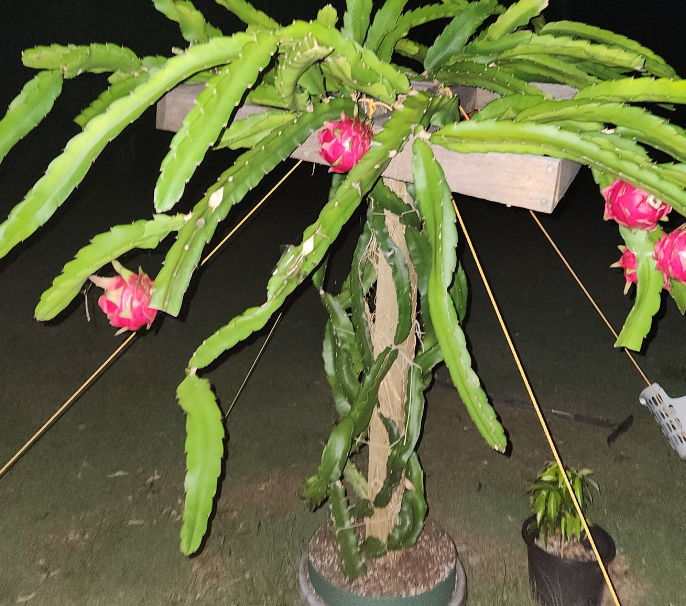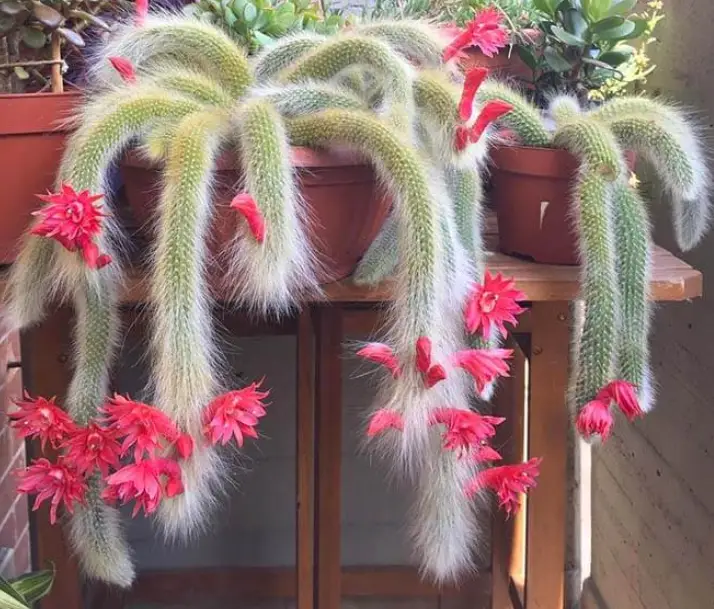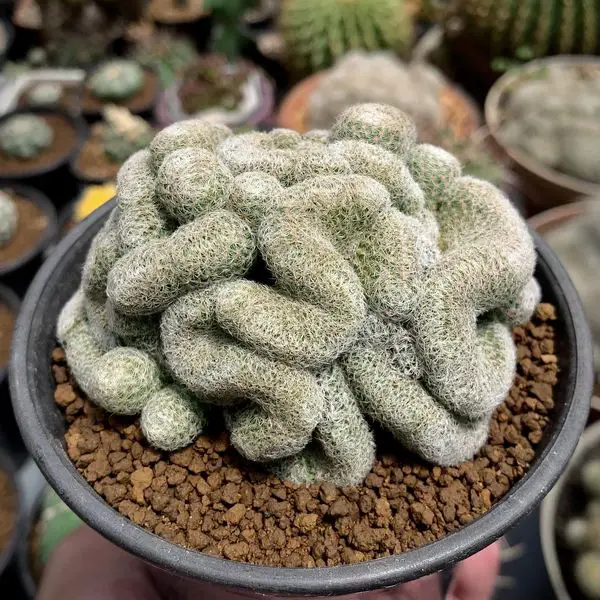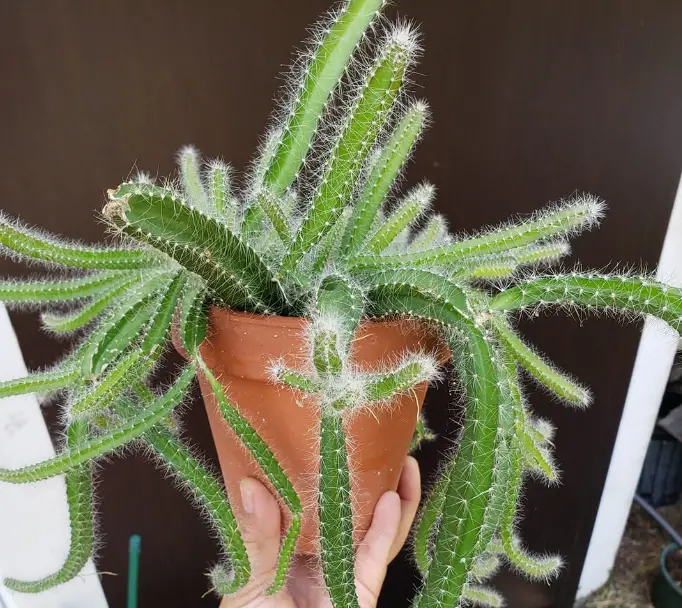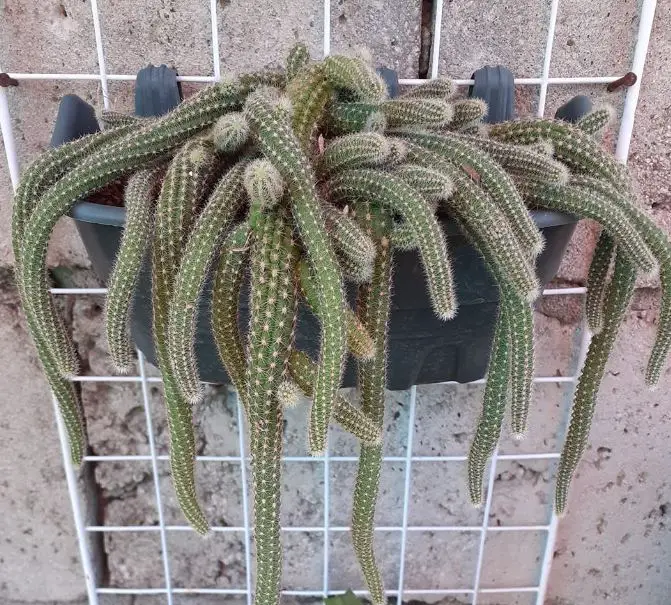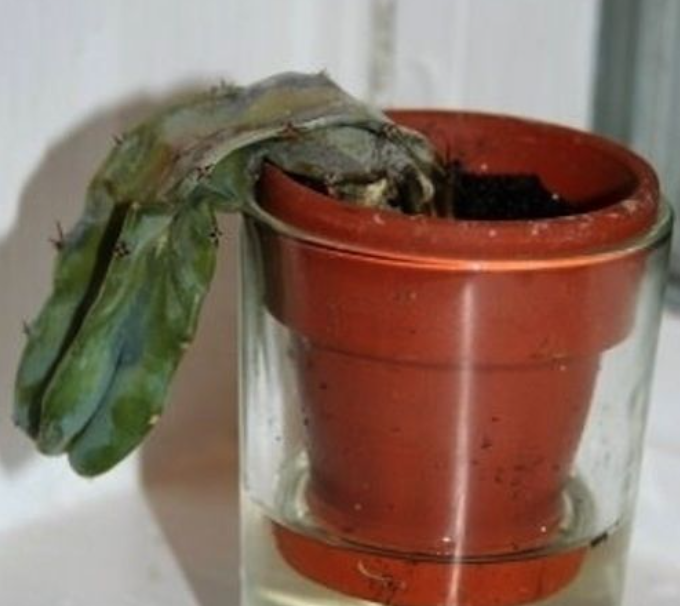Black Spots on Cactus – Causes and How to Treat
Black spots on cacti are not just a cosmetic concern, they can also signify a serious underlying problem. These spots can appear on the stem, leaves, or even the fruit of the cactus, and they can range in size from small dots to large patches. They can be caused by a variety of factors, including fungal infections, pests, frost, and sunburn.
In some cases, black spots on a cactus may be accompanied by other symptoms, such as rot, deformities, or premature fruit or flower drop. It’s important to identify and treat those black spots on your cactus in order to prevent further damage and maintain the health of the plant.
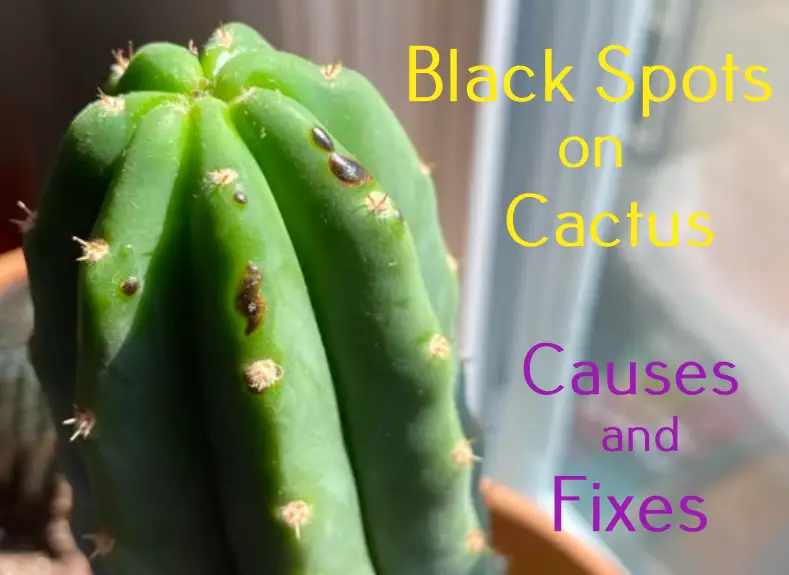
What causes black spots on cactus?
Black spots on a cactus can be caused by a number of factors, including the following:
1. Fungal infection
Cactus can develop black spots due to a fungal infection. If left untreated, fungi may spread and cause serious problems to the plant including leaf spots, stem rot, and death of the plant. Dry rot, root rot, crown rot, and powdery mildew are common fungal infections in cacti plants.
Symptoms of fungi infection in cacti plants may vary but generally, you’ll notice the following:
- Black spots on the cactus.
- Cactus turning brown.
- Mushy or spongy areas on the cactus.
- A musty smell from the cactus.
A cactus can be susceptible to fungal infections, particularly if grown in damp or humid conditions. Poor ventilation and improper lighting can also be the cause. Overcrowding cacti in pots or gardens increases the risk of a fungal infection spreading from one plant to the other.
2. Pest infestations
Black spots on a cactus can be a sign of pests, such as scale, mealybugs, and spider mites. These pests are known to cause wounds on the tissues as they suck the sap from the plant. Some of them secrete a sticky substance called honeydew, which can encourage the growth of sooty mold on the cactus.
A severe pest infestation will typically result in discoloration or yellowing of the plant. Pests are also vectors for fungal and bacterial infections. If you suspect that your cactus has pests, it’s important to take quick action to prevent the infestation from spreading to a point of killing the plant.
Most insect pests on plants don’t require chemical treatment for adequate control as explained in the Arizona Cooperative Extension research on Problems and Pests of Agave, Aloe, Cactus, and Yucca. Plants grown in the right conditions will easily overcome pests unlike those that are neglected.
3. Sunburn
Cactus loves direct sunlight but the plant may develop black spots when overexposed due to sunburn. This is more likely to occur if a cactus is suddenly exposed to too much sunlight before it acclimates. However, sunburn on cactus is more of a cosmetic concern than a health problem and in time, the affected plant may heal on its own.
However, you can reduce the severity of the cactus sunburn as follows:
- Remove the cactus from direct sunlight to prevent further damage. You may relocate the plant to a shady region.
- Keep the cactus well-watered, but be careful not to overwater it. Overwatering can lead to root rot, which can further damage or kill the plant.
- Monitor the plant and don’t hesitate to seek advice from a plant specialist if the condition is not improving.
4. Frost damage
Frost can cause irreversible damage and even death in a cactus plant. At first, it can be difficult to detect frost damage on cacti because the symptoms may not appear until several days after the frost has gone. Signs to watch include the following:
- Water-soaked or brown, mushy areas on the cactus.
- Splitting or cracking of the plant’s skin
- Black, necrotic spots on the plant
If you think your cactus has been damaged by frost, you can try the following to save the plant.
- Move the cactus to a location where it will be protected from further frost.
- Once the frost has ended, prune off any visibly damaged or dead parts of the cactus.
- Water the cactus lightly, making sure to not overwater as this can damage the plant further.
It may take several weeks or even months for the cactus to show signs of new growth. If the cactus does not recover, you may need to replace it with a new healthy plant.
To prevent frost damage in the future, make sure to protect your cactus from frost by bringing it indoors or moving it to a location where temperatures remain above freezing. You may also cover the plant with a frost protection fabric or a plastic sheet when frost is expected.
5. Injury to the plant
A cactus can be injured in a number of ways, including through physical damage, pests, and infections. In most cases, a wounded cactus will form scabs and black spots on the injured section as part of the healing process. Infected lesions on cacti are the most difficult to heal and may your intervention.
Ensure the injured area is well protected from dust, moisture, and direct sunlight. When watering, avoid splashing water on the injured section as it can cause rot. It is also important you find and fix any issue that is causing injury to your plant.
How to Treat Black Spots on Cactus
If you have black spots on your cactus, here are a few steps you can take to try to get rid of them:
- Remove the infected tissue: Most fungal infections in cacti have no practical control as explained in Texas Plant Disease Handbook. Thus, it’s important to remove any infected tissue from the plant to prevent the problem from spreading. Use a sterilized knife or scissors to cut away the infected part, and dispose of it in a sealed bag.
- Apply a fungicide: If you are sure that the black spots on your cactus are caused by a fungal infection, then apply a recommended fungicide to treat the problem. Be sure to follow the instructions on the label carefully.
- Treat for pests: To get rid of mealybugs and other insect pests on cacti, you may need to use a recommended insecticide but strictly as directed on the product label. A spray of isopropyl alcohol or neem oil may also combat the problem. Be sure to test the home remedy on a small area before using it on the whole plant.
- Provide great care: Ensure that your cactus is receiving at least 4 hours of direct sunlight per day, proper watering, and good ventilation. Make sure you inspect new plants for pests and infections before including them in your indoor or outdoor plant collection.
If you are unsure of what is causing the black spots on your cactus, it’s important to consult with a professional or take a sample of the plant to a nearby local nursery or gardening center for examination. They may be able to recommend a course of action to treat the problem.
My name is Diane M Lewik, and I am the founder of this website. I am a degree holder in plant biology from the University of California – Berkeley. Over the years, I have cultivated a vast collection of succulents and I have learned a great deal about how to grow and care for these unique plants. Feel free to ask any questions in the comment section below.
